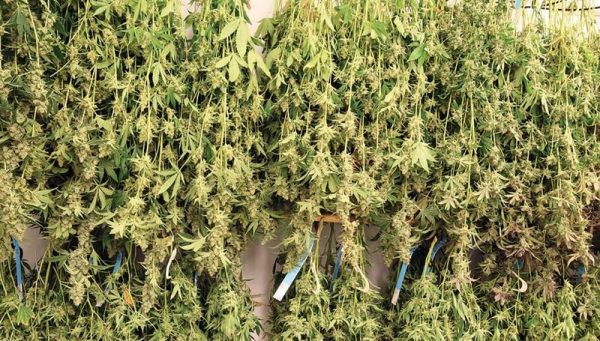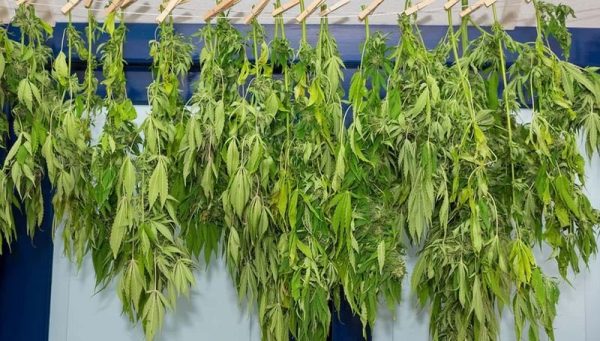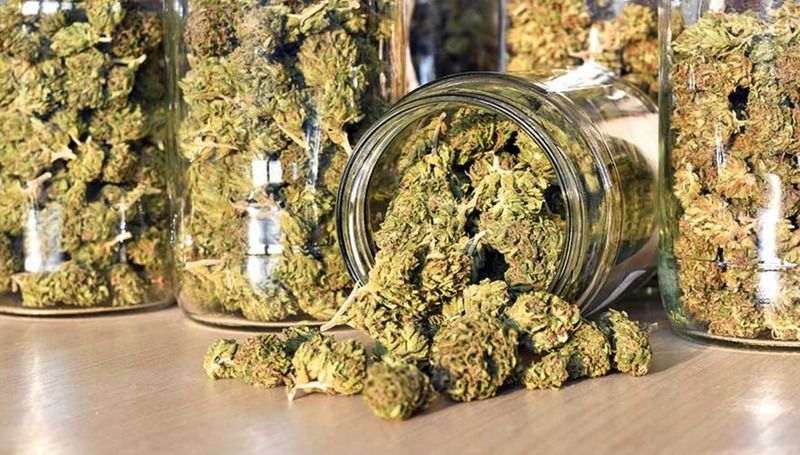After doing all of that hard work to grow your marijuana plants, it’s time to pick them. Cannabis drying and curing are the terms for this procedure. Your cannabis buds are now accessible for you to test. However, before you can do so, you must first dry them. You may be tempted to hurry the process along as soon as possible because it will take a long time for your flowers to dry and cure properly inside a controlled environment due To remove moisture from your flowers and do so in such conditions. You can buy this product in our boutique.
Why? The goal is to create an improved final product as a result of doing so. You’ll be able to keep your marijuana for longer without worry about losing the CDB content or mold growing, and you won’t have to worry about that when you cure it correctly. When you fully cure the flower, put it in an airtight container and store it in a cool, but dark location for up to two years, and it doesn’t lose its strength. Let’s look at cannabis drying and curing in further depth next.

Different Methods of Drying and Curing Cannabis
Cannabis drying and curing are done in a variety of ways. The most popular technique for marijuana production is used by the majority of growers, but with variations. You could cure the cannabis buds using water or freeze them dry, but you may also use dry ice. However, the focus of this article will be on the simpler and certain technique for obtaining optimal results from your marijuana harvest.
How Long Does It Take to Dry Cannabis?
Drying time varies depending on the species and growth stage, but generally 2-7 days is required. When wet trimming, the process is usually shorter since most of the plant material is removed first, resulting in less plant to dry.

You may hang harvested plants upright on a line or hanger to dry, either whole plants or branches. Buds will not be flattened or deformed as they dry if you do this.
When it’s time to trim wet buds, place them on a drying rack. Whether you’re trimming wet or dry, bend a branch or stem after two days to see if the stem breaks—if the stem snaps, that means the buds are fully dry. If they don’t break when bent, leave them for another day.
Preliminary Cannabis Drying
The drying process of cannabis will be different according to the harvest. Most people, however, cut the marijuana branches 12 to 16 inches long. Then, they would toss away the undesirable marijuana leaves and suspend the branches from a wire or string in a vertical posture.
Some marijuana farms hang the entire plant from the ceiling. Others will just cut off the marijuana buds from the branches and place them on a drying rack. You may completely manicure the flowers before or after cannabis drying.
The Essentials
Regardless of the approach you use, it’s critical to keep your cannabis crop in a dark place and maintain the temperature between 60-70°F along with a humidity level of 45 to 55 percent. Use a tiny fan to gently move air in the room. If you want to preserve the odor and flavor of your marijuana harvest as well as the finished product, this is very important. It would also be useful if you have a large harvest to use an A/C unit or dehumidifier.
How To Store Your Harvested Cannabis Buds
You can store buds for up to two years after curing them without losing much potency. Cannabis that has been properly dried and cured is best kept in a cool, dark location—mildew and other molds thrive at temperatures of 77-86°F.
Excess heat can scorch cannabis and terpenes that have taken months to grow. When these essential oils become excessively dry, along with the plant material, it may give rise to a harsh, hot smoke.
Here are some tips for storing buds:
- Store out of direct sunlight in a cool, dry place
- Store in containers with a neutral charge, like glass mason jars
- Use hygrometers or products like a Boveda pack to monitor and control humidity levels
- Vacuum seal jars and containers to minimize oxygen exposure
- Separate strains to maintain individual flavor profiles, and label with a date—it sucks to mix up strains
Temperature
The effects of temperature are complicated. When exposed to low temperatures, THC decarboxylates less quickly and THCA converts into the psychoactive THC at a slower rate. After several weeks, THC degrades into CBN, a cannabinoid with distinctive effects and properties. Warm air has more moisture than cold air, which slows decarboxylation even further.
Humidity
Keeping mold and other mold pollutants out of your cannabis is based on humidity control. When cannabis is kept at a relative humidity level of 55-65%, it maintains and improves color, consistency, aroma, and taste.
Light
Many organic and synthetic substances are destroyed by UV radiation, and cannabis is damaged by UV rays over time. Controlling temperature can also be easier when cannabis is stored out of direct light.
Storage
Cultivators should store cannabis in proportion to its volume and anticipated storage duration. Product can be kept in a sealed container that protects it from light and moisture, as well as regulating air humidity.
In a food-grade, airtight, 50-gallon plastic drum, top-shelf cannabis flower will last a long time. Sedillo said flowers should be kept in an indoor climate controlled setting where they aren’t frequently disturbed or moved. “Flower must be stored indoors in a temperature-controlled environment,” Flippo added.
Flower does not require “burping,” according to Sedillo. The container should be opened to allow gas to escape, he says.
“If you have to ‘burp’ your flowers, it means you didn’t properly dry them in the first place,” he added.
Long-term storage demands have increased in importance in the hemp market as a result of oversupply of hemp-derived CBD.

